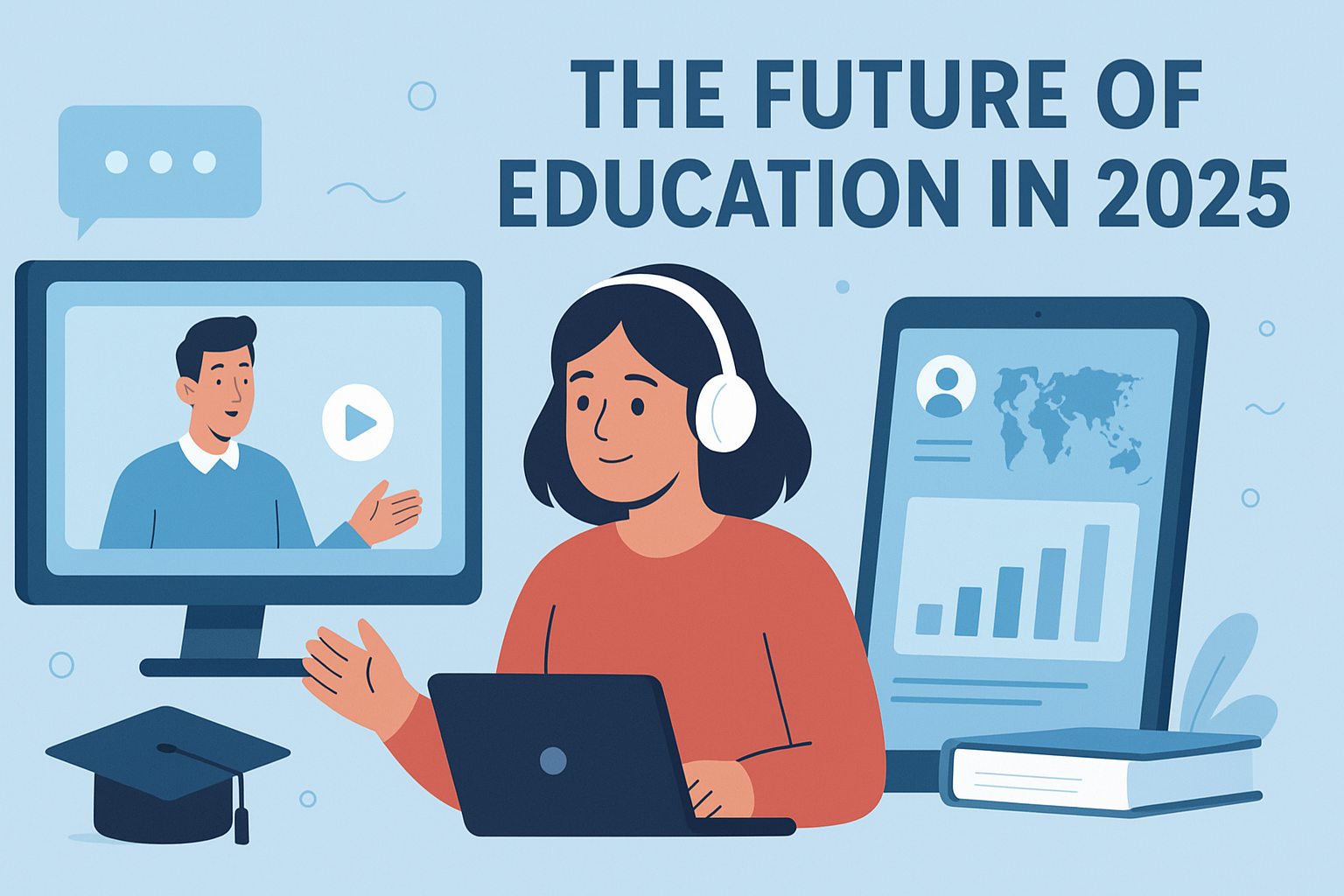
The Future of Education in 2025: Trends Shaping the Way We Learn
Education has always been the cornerstone of human progress, but in 2025, it is evolving faster than ever. The combination of advanced technology, changing social needs, and new learning models is transforming classrooms, curriculums, and even the definition of what it means to be “educated.”
The future of education is not just about better tools—it’s about smarter, more personalized, and more accessible learning for everyone. In this article, we’ll explore the key trends shaping education in 2025 and how they are impacting students, teachers, and the global workforce.
1. Personalized Learning with AI and Data Analytics
One of the most significant changes in education today is the rise of personalized learning. With artificial intelligence (AI) and advanced data analytics, schools and online platforms can now tailor lessons to each student’s needs, pace, and learning style.
- Adaptive Learning Platforms: AI-based systems can adjust difficulty levels, provide targeted exercises, and even suggest new topics when a student is ready to move ahead.
- Real-Time Progress Tracking: Teachers can monitor student performance instantly and identify learning gaps before they become bigger problems.
- Customized Study Plans: AI tools can create unique study paths, ensuring students master essential skills at their own pace.
By 2025, personalized learning is no longer a luxury—it’s becoming the standard.
2. Hybrid and Remote Learning Models
The pandemic years taught us that learning doesn’t have to happen only in a physical classroom. In 2025, hybrid and remote learning are now fully integrated into educational systems worldwide.
- Flexible Schedules: Students can combine online lessons with in-person classes, balancing their time better.
- Global Classrooms: Learners can attend lectures from experts anywhere in the world, breaking geographic barriers.
- Accessible Education: Remote learning opens doors for those in rural or underserved areas who previously had limited access to quality education.
Instead of replacing traditional classrooms, these models complement them, offering more flexibility for both students and teachers.
3. Virtual Reality (VR) and Augmented Reality (AR) Learning
VR and AR technologies have transformed how students interact with subjects. Imagine studying history by walking through ancient Rome in VR or learning anatomy by exploring a 3D human body model in AR.
- Immersive Experiences: Students learn complex concepts by experiencing them, making lessons more engaging and memorable.
- Safe Simulations: Medical students, pilots, and engineers can practice in a realistic yet risk-free environment.
- Increased Engagement: Interactive lessons keep students motivated, especially in subjects they may find challenging.
By 2025, VR and AR are not futuristic experiments—they’re mainstream teaching tools.
4. Lifelong Learning and Micro-Credentials
The job market in 2025 demands continuous skill development. Instead of one-time degrees, professionals are earning micro-credentials—short, skill-focused certifications from universities and online platforms.
- Industry-Relevant Skills: Courses are designed to match current market needs, ensuring learners stay competitive.
- Affordable and Flexible: Micro-credentials take less time and cost less than traditional degrees.
- Stackable Learning: Learners can combine multiple certificates to create a customized qualification path.
This shift supports the idea that education is not something you finish—it’s a lifelong process.
5. Emphasis on Soft Skills and Emotional Intelligence
As automation takes over repetitive tasks, employers value soft skills more than ever. Education in 2025 focuses on developing:
- Communication Skills – Clear and confident expression is essential in any career.
- Critical Thinking – The ability to analyze and solve problems creatively.
- Collaboration – Working effectively in diverse, global teams.
- Emotional Intelligence (EQ) – Understanding and managing emotions for better relationships and leadership.
Schools now integrate these skills into their curriculum alongside traditional academics.
6. Sustainable and Eco-Conscious Education
Climate change awareness has reached classrooms, and eco-conscious education is a growing trend.
- Green Campuses: Schools are adopting renewable energy, recycling programs, and eco-friendly designs.
- Environmental Curriculum: Students learn about sustainability, renewable energy, and environmental protection.
- Digital Resources: Reducing paper use through e-books and online assignments helps minimize environmental impact.
By 2025, schools are not just teaching about sustainability—they are modeling it.
7. Gamification of Learning
Gamification—applying game design elements to education—makes learning fun and interactive.
- Point Systems and Badges: Students earn rewards for completing tasks, encouraging active participation.
- Story-Based Learning: Lessons are presented as challenges or quests, keeping students engaged.
- Friendly Competitions: Healthy competition motivates learners to push their limits.
This approach improves motivation, retention, and overall student satisfaction.
8. Global Collaboration and Cultural Exchange
The world is more connected than ever, and education reflects this global mindset.
- International Projects: Students from different countries work together on shared assignments.
- Language Exchange Programs: Digital platforms connect learners with native speakers worldwide.
- Cultural Awareness: Exposure to diverse perspectives encourages tolerance and empathy.
This global collaboration prepares students for careers in an interconnected world.
9. AI-Powered Teacher Support
AI isn’t replacing teachers—it’s empowering them. In 2025, educators use AI for:
- Automated Grading: Saving time on routine assessments.
- Lesson Planning: AI suggests teaching strategies based on student needs.
- Student Engagement Insights: Data-driven recommendations help teachers improve class participation.
This allows teachers to focus more on mentoring, creativity, and emotional support.
10. Accessibility and Inclusive Education
Technology is making education more inclusive for students with disabilities.
- Speech-to-Text Tools: Helping students with hearing impairments follow lessons.
- Screen Readers and Braille Displays: Supporting visually impaired learners.
- Customizable Learning Interfaces: Allowing students to adjust text size, colors, and formats to their needs.
The goal is simple: no student should be left behind.
Challenges Ahead
While these trends are exciting, they also bring challenges:
- Digital Divide: Not all students have equal access to technology.
- Data Privacy: Protecting student information from misuse is critical.
- Teacher Training: Educators must keep up with rapid technological changes.
Governments, schools, and communities must work together to address these issues.
The Road Ahead
By 2025, education is becoming more personalized, digital, global, and skill-focused. The classroom of the future is not limited by walls—it’s wherever a learner is willing to engage.
The trends shaping the way we learn today will define the leaders, innovators, and thinkers of tomorrow. Whether you are a student, a teacher, or a lifelong learner, embracing these changes is key to thriving in a fast-moving world.

